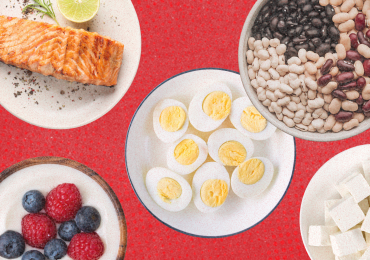Has your dog mastered basic cues like “sit,” “down” and “come”? These are the most common cues most people will teach their furry friends. When your dog seems eager to learn more, combining their previous knowledge of the basic cues with some new training can help keep your pet stimulated, provide enrichment and it’s a great bonding time for you and your furry friend.
Here are some of our favourite next-step tricks to get you started.
Shake paws
Once your dog has mastered “sit” reliably, try “shake paws.” Start by having your dog sit. Hold a treat in your hand and show it to your dog, then close your fist over the treat so your dog can’t access it. Say “shake” and wave your closed fist under their nose to keep them interested in the treat. Once your dog starts sniffing around your hand for the treat, stay still and wait for them to start pawing at your hand. The moment your dog touches your hand with his or her paw, give positive encouragement and open your hand to give them the treat. Eventually, you should work up to practicing with the treat in the other hand and then eliminating the treat altogether.
Roll over
Once your dog has mastered “down” reliably, try “roll over.” Start by having your dog lay down. Kneel beside them with a treat in your hand. Using the treat hand, guide their nose towards their shoulder, which prompts them to lay on their side. Repeat this multiple times, praising and giving treats when they lie flat on their side with their head on the floor. Once mastered, then move your hand from their shoulder to their backbone, causing them to roll onto their back. Continue moving the treat so they roll onto the other side. Once they are consistently following the treat, say “roll over” to connect the verbal cue to the motion. Eventually, you should work up to eliminating the treat altogether.
Bow
Start by having your dog standing in front of you. Put a treat in your hand and move it to the space between your dog’s legs and back toward their belly. As soon as your dog gets into the bow position mark the behaviour with a “yes” and immediately give them the treat. Get your dog moving again so they don’t end up lying down. Eventually, you should work up to adding in the verbal cue “bow” as the dog is performing the cue and start to eliminate the need to move your hand between their legs
Spin
Start by having your dog standing in front of you. Put a treat in your hand and hold it above their nose, slowly moving it in a large circle just above their head. They should follow your hand. Continue moving your hand full circle and if your dog follows the complete circle, reward with praise and the treat. Once mastered, start adding the “spin” cue. Once consistently following the treat, use your hand motion without the treat in it, and eventually you should work up to not using hand motions or treats at all.
“Training is great for providing mental stimulation and building confidence in animals,” says Megan Holmes, Animal Behaviour Coordinator with Ontario SPCA. “It greatly helps to reduce fear, anxiety and stress and encourages positive behaviours.”
Your approach to learning new tricks should be individualized based on your specific dog for optimal results.
“Some things to consider when working with your dog is their own innate behaviours unique to them and how motivated they are with a reward. We always want to consider if the dog is enjoying the activity and is it beneficial to serving a purpose such as working their brain, tapping into natural behaviours or just having fun bonding time with your dog,” says Megan. “It is always important to note your dog’s age and physical ability as well. We don’t want to be teaching a ‘crawl’ cue to an older dog who may have arthritis; we want to make sure we are taking a considerate approach to teaching our dogs.”
As with all training and tricks, consistency and practice are key. Make an intentional effort to practice these verbal cues regularly to hone their skills. Soon enough, your furry friend will be mastering these tricks and looking for more to learn. And you’ll have fun showing off your companion’s new skills!
If this information was helpful, please help us continue to educate about pet health and well-being by making a donation.
The post Beyond basics: Teaching your dog new cues appeared first on Ontario SPCA and Humane Society.
Leave a comment




